Nixeus VUE 30: 30" 2560x1600 IPS Monitor Review
by Chris Heinonen on August 20, 2013 6:00 AM ESTTested using the Leo Bodnar lag tester, I measured 29.23ms of lag with a 1080p signal on the VUE 30. TO use the Leo Bodnar I average the three areas of the screen; top, middle, and bottom, that it can provide data for. With the VUE 30 the Top and Middle were both really low, at 21.6ms and 27.5ms, but it jumped up to 38.6ms at the bottom. I usually see variations of around 7-8ms between the areas, or roughly half the 16.7ms it takes to move between frames, but not a spread of 6ms and then 11ms.
Despite that weird measurement, I didn’t see any tearing or anything else that might be an issue when using the Nixeus for gaming. I’ll just chalk it up to some slightly strange behavior with the scaler and its timing, but not something that I could actually see a problem with. Note also that lag might be lower running at the native 2560x1600, but I can't directly compare that with most other displays as they lack support for that resolution.
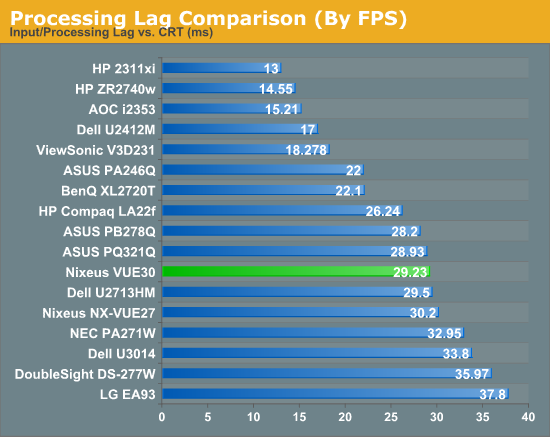
Power use is not a good area for the Nixeus. It is rated for < 130 watts of power consumption on the specs, but my unit managed to use over 150 watts at peak brightness. Since the peak brightness was also almost 75 cd/m2 below the specs, that is a large difference there in the power measurements. A white screen also uses less energy than a black screen with an LCD typically, so I’m not sure what would provide a power measurement that low while running at maximum brightness. Most likely Nixeus is rating power use by how much the display requires and not accounting for the efficiency of the power brick; 85% efficiency at 130W would give us 153W, which is close to what I'm seeing, but it's still quite a bit higher than a modern LED backlit display.
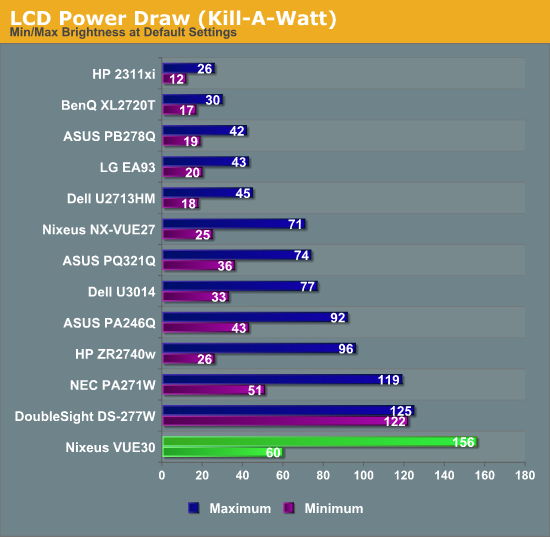
Going down to minimum brightness drops the power use to 60 watts, which is much more reasonable. Using my formula to get candelas per square inch per watt, the Nixeus came in dead last among the displays I have tested. All of the 30” displays do poorly here, as their more complex backlighting systems use a lot more power, but the Nixeus is the worst offender.
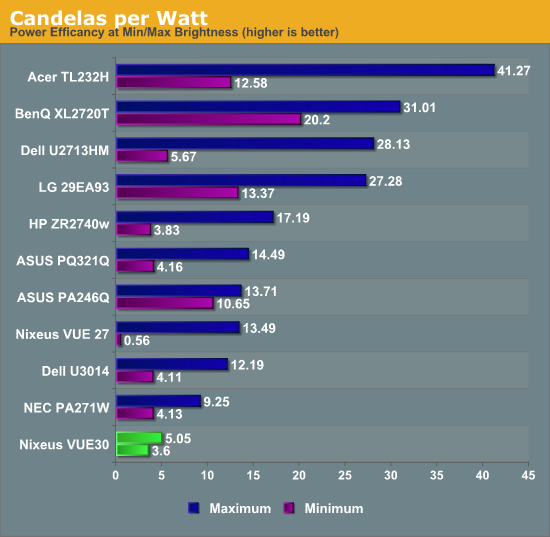
Running the Nixeus profile through Gamutvision, we see 103% coverage of the AdobeRGB gamut. This falls short of some other displays, but still is full coverage and as we saw it works pretty well when in AdobeRGB mode.
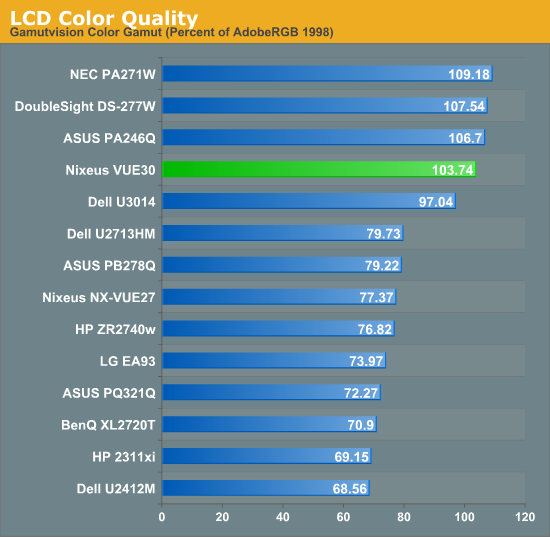
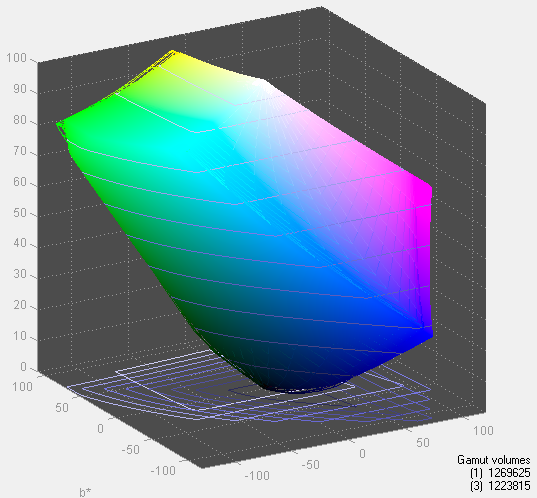


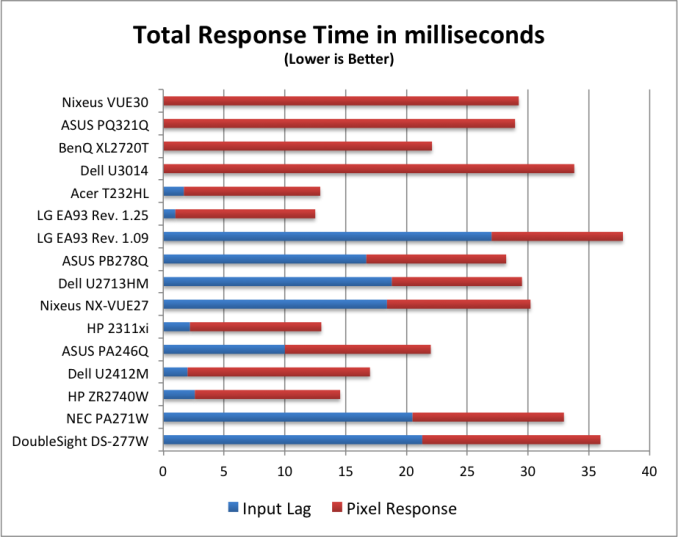








95 Comments
View All Comments
ezridah - Tuesday, August 20, 2013 - link
I saw that you are doing one of the 27" ones. Is it the Glass Panel Pro or the Zero-G?cheinonen - Tuesday, August 20, 2013 - link
The Zero-G. I believe I'll be getting the Glass Panel Pro as well, though.SeanFL - Wednesday, August 21, 2013 - link
I bought the higher end 27" monoprice monitor and find it phenomenal. Looks amazing.Daniel Egger - Tuesday, August 20, 2013 - link
I stopped reading at CCFL...piklar - Wednesday, August 21, 2013 - link
Good to see another 30" offering out there for reasonable price. Id take a Crossover 30Q5 Pro any day over this for a lot less that cost of this as well, might be a bare bones 30" but least it has 5Ms response times making it far more suitable for gaming..cheinonen - Wednesday, August 21, 2013 - link
How is the response time measured? Unless they're measured using the same method, it's really hard to compare one measurement to another due to all the factors possibly involved in the measurement.bznotins - Wednesday, August 21, 2013 - link
Still rocking my 3007WFP from *2006*. Love that monitor, best spend I ever made on a PC component. It's spanned numerous upgrades and keeps trucking. No perceptible input lag. No dead pixels.It has only one input (DL DVI) and no OSD. I wish more monitor manufacturers would do this today -- focus entirely on the panel and leave the scaling/processing hardware out.
I'm giving one of those Korean 27" monitors a try and I'm happy to see that they're just as utilitarian as the Dell. Worried about QC, but for $250 it's worth a try.
AnnonymousCoward - Thursday, August 22, 2013 - link
And sadly, there's been no significant improvement in 7 years and counting.Doomtomb - Wednesday, August 21, 2013 - link
$730 isn't that cheap. We've already had $500 30" 2560x1600 IPS imports from Korea for a while now. Wake me when it's sub $400.Zap - Wednesday, August 21, 2013 - link
"Power connects through a power brick to the bottom of the unit."Looks as if it uses a normal power cable.